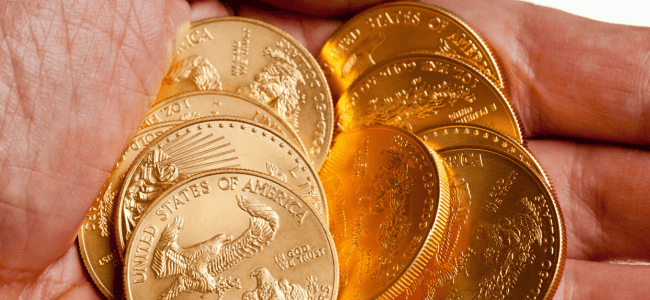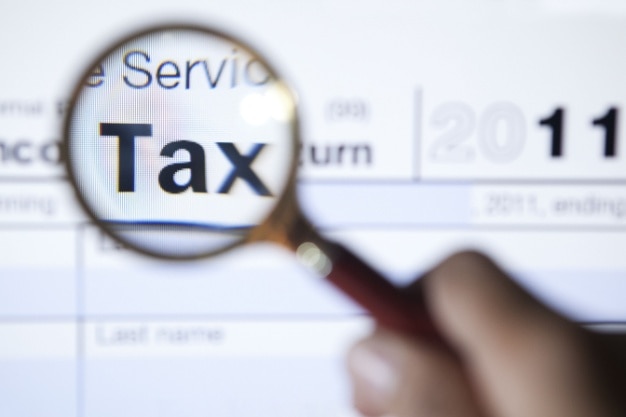Bullion vs Numismatic Coins: Investing in Precious Metals
May 15, 2023

Investors and collectors often find themselves drawn to the debate between bullion vs numismatic coins in the world of precious metals. It’s important to be aware of the dissimilarities between bullion and numismatic coins when exploring this captivating realm, as their respective roles in diversifying an investment portfolio can vary significantly.
Bullion coins are primarily valued for their precious metal content, while numismatic coins derive their worth from factors such as rarity, historical significance, and condition. This blog post will provide an in-depth analysis on various aspects of both bullion and numismatic coins – from popular options to investment potential comparisons.
Furthermore, we’ll explore how building a diversified portfolio can help balance risk versus reward when allocating funds among different asset classes. Additionally, coin grading standards and authenticity play crucial roles in determining value; hence we’ll discuss third-party grading services and ways to recognize counterfeit items. Lastly, navigating tax implications related to capital gains on precious metals investments or special considerations for collectible items will be addressed.
Embark on this insightful journey with us as we unravel the intricacies behind bullion vs numismatic coins – empowering you with knowledge to make informed decisions within this captivating market.
Table Of Contents:
- Understanding Bullion Coins
- The Allure of Numismatic Coins
- Comparing Asset Potential
- Building a Diversified Portfolio
- Coin Grading Standards & Authenticity
- Navigating Tax Implications
- FAQs in Relation to Numismatic Coin Investment
- Conclusion
Understanding Bullion Coins
Bullion coins are primarily valued for their precious metal content, such as gold, silver, or platinum. These coins serve as a more colorful way of gaining exposure to precious metals than bars and can be easily bought and sold based on the current market value of the underlying metal. Examples include American Gold Eagles and Canadian Silver Maple Leafs.
Factors Affecting Bullion Coin Prices
- Precious Metal Content: The primary factor affecting bullion coin prices is the weight and purity of the precious metal they contain.
- Bullion Market: As these coins closely track the price movements in the global bullion market, any fluctuations in demand for gold, silver, or platinum will impact their value.
- Mintage & Popularity: Some popular bullion coins may carry a slight premium due to higher demand or limited mintage numbers.
Popular Bullion Coin Options
- American Gold Eagles: One of the most widely recognized gold bullions worldwide, available in various sizes ranging from 1/10 oz to 1 oz.
- Canadian Silver Maple Leafs: A popular silver bullion coin known for its .9999 fine silver purity and iconic maple leaf design.
- Australian Gold Kangaroos: These coins feature a unique kangaroo design that changes annually, adding an element of collectibility to their investment appeal.
Incorporating bullion coins into your precious metals portfolio is an excellent way to diversify your investments while maintaining exposure to the stability offered by gold, silver, or platinum during times of economic uncertainty. To make the best decisions for your portfolio, it is important to be aware of the distinction between bullion and numismatic coins when investing in gold or other precious metals.
Bullion coins may provide diversification to an investment portfolio, but their returns can be uncertain. With numismatic coins, however, there is the potential for greater reward if you understand how to accurately determine their value.
The Allure of Numismatic Coins
Numismatic coins have an added premium over their precious metal content due to factors like rarity, historical significance, condition, or design. Collectors often seek out these unique pieces which may date back decades or centuries. For example, a 1990 American Gold Eagle proof coin can go for upwards of $3,000 – significantly higher than its bullion counterpart.
Determining Numismatic Value
To assess the value of numismatic coins, several factors come into play, including:
- Rarity: The fewer coins that were minted or are currently in circulation increases a coin’s rarity and therefore its value.
- Historical Significance: Coins with a rich history or those associated with significant events tend to be more valuable.
- Condition: The better preserved a coin is (minimal wear and tear), the higher its worth will be.
- Design: Unique designs by renowned artists can increase the desirability and value of certain coins.
Notable Examples of Numismatic Coins
A few examples of popular numismatic coins include:
- Saint-Gaudens Double Eagles ($20 gold piece): Minted from 1907-1933 and designed by Augustus Saint-Gaudens, these gold coins are considered some of the most beautiful ever produced in America.
- Morgan Silver Dollars: Struck between 1878 and 1921, these silver coins feature the profile of Lady Liberty on one side and an eagle on the other.
- Flowing Hair Dollar: The United States federal government issued its first dollar coin back in the late 1700s, depicting a portrait of Lady Liberty with her hair flowing. It features a portrait of Lady Liberty with flowing hair.
When buying numismatic coins, it’s important to research their background, scarcity, state and design components for a prudent financial choice. Numismatic coins can be a valuable addition to a precious metals portfolio, but it’s important to understand the fundamental difference between numismatic coins and bullion coins. While bullion coins are valued primarily for their precious metal content, numismatic coins have added value due to their collectible nature.
The appeal of numismatic coins is their capability to be worth more than the intrinsic value, making them a desirable venture for those in search of potential gains. With that said, it is important to understand how these investments compare with other precious metals options before committing funds.
Comparing Asset Potential
When comparing potential between bullion coins and numismatic coins, it’s essential to consider factors such as liquidity, storage costs, appreciation potential, and your personal interests in collecting versus pure investing purposes. Understanding the different characteristics can aid in deciding which kind of coin is most suitable for one’s financial ambitions.
Liquidity Comparison Between Bullion and Numismatics
Liquidity refers to the ease with which an asset can be bought or sold without affecting its price. In general, bullion coins like American Gold Eagles or Silver Maple Leafs tend to have higher liquidity than numismatic coins due to their popularity in the bullion market. Since they are primarily valued based on their precious metal content, investors can easily buy or sell them at prevailing market prices. On the other hand, numismatic coins may require more time and effort to find a suitable buyer willing to pay a premium for their rarity or historical significance.
Appreciation Potential Analysis
- Bullion Coins: The value of bullion coins generally follows fluctuations in the underlying precious metals market. As a result, if gold or silver prices increase over time due to factors like inflation protection during an unstable economy, so too would the value of these investments.
- Numismatic Coins: The appreciation potential for rare numismatic pieces depends on various elements such as rarity, historical significance, and condition. These factors can cause the value of collectible coins to increase significantly over time, outpacing gains in the precious metals market.
Ultimately, it’s essential to weigh your investment goals and risk tolerance when deciding between bullion or numismatic coins. If you prefer a more stable investment tied directly to precious metal prices, bullion may be a better fit. However, if you’re interested in potentially higher returns through coin collecting and have an appreciation for rare pieces’ unique qualities, numismatics could offer greater rewards.
Comparing asset potential is essential for making informed decisions when investing in precious metals IRAs. Constructing a diversified portfolio can help guarantee that your investments are well-balanced and designed for extended term prosperity.
Key Takeaway:
When comparing bullion and numismatic coins, investors should consider liquidity, storage costs, appreciation potential, and personal interests. Bullion coins tend to have higher liquidity due to their popularity in the market while rare numismatic pieces’ value depends on factors such as rarity and historical significance. Ultimately, it’s important to weigh investment goals and risk tolerance when deciding between the two types of coins.
Building a Diversified Portfolio
Individuals should carefully consider the advantages and disadvantages before determining if they should invest in either kind of coin or both. Incorporating both types into one’s portfolio allows for diversification benefits while still maintaining exposure to precious metals markets that offer stability during economic uncertainty.
Allocating Funds Between Different Asset Classes
Creating a diversified precious metals portfolio requires dividing funds between different asset classes, such as bullion coins, numismatic coins, and other forms of investments like bars or ETFs – to balance risks associated with market fluctuations while providing long-term financial security. This can help mitigate risks associated with market fluctuations and provide long-term financial security. For example:
- Bullion Coins: American Gold Eagles, Canadian Silver Maple Leafs
- Numismatic Coins: Rare gold coins, historical silver coins
- Precious Metal Bars & ETFs: Gold bars, silver-backed exchange-traded funds (ETFs)
Balancing Risk vs Reward
The fundamental difference between investing in bullion versus numismatic coins lies in their risk-reward profiles. Bullion coin investments are typically considered lower-risk due to their direct correlation with the underlying metal value (bullion market prices). In contrast, numismatic coin values depend on factors like rarity and condition which may be more volatile but potentially yield higher returns if chosen wisely.
Incorporating both types of assets into your precious metals IRA can help balance the risk-reward equation, providing a more stable investment strategy in an unstable economy. By carefully researching and purchasing numismatic coins with strong historical performance alongside popular bullion coins like gold eagles or silver maple leafs, investors can create a well-diversified portfolio that offers both stability and potential for appreciation.
Constructing a varied investment portfolio is vital for anyone who wishes to find equilibrium between risk and return. Grading criteria and authentication techniques must be comprehended for guaranteeing the coins one invests in are of exceptional quality.
Coin Grading Standards & Authenticity
When investing in numismatic coins, the importance of understanding grading standards cannot be overstated. Ensuring the authenticity of your investments is crucial to protect their value and potential appreciation. Reputable third-party grading services like PCGS or NGC can help you determine the quality and value of a coin.
Importance of Third-Party Grading Services
The fundamental difference between bullion coins and numismatic coins lies in their respective values based on precious metal content versus rarity, historical significance, condition, or design. As such, accurately assessing a coin’s grade becomes vital for determining its true worth. Third-party grading services provide an unbiased evaluation by expert professionals who adhere to strict industry standards. By utilizing these services when purchasing numismatic coins, investors can have confidence in their investment decisions while avoiding overpaying for misrepresented items.
Recognizing Counterfeit Coins
- Educate yourself: Familiarize yourself with popular bullion coins and rare collectible pieces alike so that you can spot inconsistencies or inaccuracies in counterfeit examples.
- Magnification: Use a magnifying glass to closely examine details on both sides of a coin – many counterfeits will display imperfections not found on genuine specimens.
- Weigh it: Compare the weight of suspected fakes against known authentic samples; discrepancies may indicate altered compositions or dimensions indicative of forgery attempts.
- Purchase from reputable dealers: To minimize risk exposure when purchasing gold, silver, or other precious metals for your precious metals IRA, always deal with established and reputable coin dealers who can provide proper documentation and guarantees of authenticity.
By adhering to these guidelines, investors can safeguard their numismatic coin investments against potential fraud while building a valuable collection that may appreciate over time in an unstable economy.
It is essential to understand the importance of coin grading standards and authenticity when investing in numismatic coins. To ensure a successful investment, it is also important to consider the tax implications associated with precious metals IRAs.
Navigating Tax Implications
Understanding the tax implications of investing in bullion or numismatic coins is essential for creating an effective investment strategy, taking into account potential capital gains taxes and special considerations for collectible items. Capital gains taxes and special considerations for collectible items can impact your overall investment strategy. In this section, we’ll discuss how these factors apply to precious metals investments and provide guidance on navigating potential liabilities.
Capital Gains Tax on Precious Metals
The Internal Revenue Service (IRS) considers gold and silver coins as capital assets subject to capital gains tax when sold at a profit. The current long-term capital gains rate is 0%, 15%, or 20% depending on your income level; however, collectibles like numismatic coins are taxed at a maximum rate of 28%. It’s crucial to keep detailed records of your purchases and sales for accurate reporting during tax season.
Tax-Advantaged Options: Precious Metals IRAs
- Precious Metals IRA: A Precious Metals IRA, also known as a Gold IRA or Silver IRA, allows investors to hold physical gold, silver, platinum, or palladium within an Individual Retirement Account (IRA). This option provides certain tax advantages such as deferred taxation until withdrawal.
- Roth IRAs: Investors may consider opening a Roth IRA if they meet eligibility requirements since qualified withdrawals from this type of account are generally not subject to federal income taxes.
Special Considerations for Collectible Items
In addition to standard capital gains taxes, collectible items like numismatic coins may be subject to additional tax implications. For instance, if you inherit a valuable coin collection, the estate may need to pay federal estate tax on its value. Additionally, some states impose their own inheritance or estate taxes that could affect your investment.
Understanding and navigating the various tax implications associated with bullion and numismatic coin investments is essential for maximizing returns and minimizing potential liabilities. Consult with a financial advisor or tax professional familiar with precious metals investing to ensure compliance with all applicable regulations.
Key Takeaway:
Investors in bullion or numismatic coins must understand the tax implications associated with their investments, including capital gains taxes and special considerations for collectible items. Precious Metals IRAs offer tax advantages such as deferred taxation until withdrawal, while collectibles like numismatic coins may be subject to additional tax implications beyond standard capital gains taxes. It’s important to consult with a financial advisor or tax professional familiar with precious metals investing to ensure compliance with all applicable regulations.
FAQs in Relation to Numismatic Coin Investment
Do Bullion Coins Have Numismatic Value?
Bullion coins generally do not possess significant numismatic value, as their worth is primarily based on the weight and purity of precious metals they contain. However, some limited edition or rare bullion coins may acquire a premium due to collector demand. Learn more about the differences between bullion and numismatic coins.
Is It Better to Invest in Coins or Bullion?
The choice between investing in coins or bullion depends on individual goals and risk tolerance. Bullions are ideal for investors seeking stability through exposure to precious metals, while numismatic coin investments offer potential appreciation driven by rarity and historical significance. A balanced approach with both asset types can provide diversification benefits.
What Is the Difference Between a Bullion Coin and a Regular Coin?
A bullion coin is minted from precious metals like gold or silver with its value tied to its metal content, whereas a regular (circulating) coin serves as legal tender for everyday transactions without any intrinsic metal value consideration.
What Is the Difference Between Gold Bullion and Coin?
Gold bullions, which include bars, ingots, rounds, etc., are made of pure gold meant for investment purposes only; whereas gold coins, either circulating currency or commemorative issues struck by government mints that could be used as legal tender or collected for their numismatic value. Explore the differences between gold bullions and coins.
Conclusion
In conclusion, understanding the differences between bullion and numismatic coins is crucial for making informed investment decisions. While bullion coins offer a more stable investment option with their precious metal content, numismatic coins can provide greater potential for appreciation due to their rarity and historical significance.
Investors ought to think about liquidity, grading regulations, tax effects and portfolio diversification when selecting which coin to invest in. By carefully balancing risk versus reward and allocating funds between different asset classes, investors can build a diversified portfolio that includes both bullion and numismatic coins.
If you’re interested in exploring the world of numismatic coin investment further, contact American Alternative Assets today to learn how our team of experts can help guide you through the process. Let us aid you in capitalizing on this thrilling chance!












